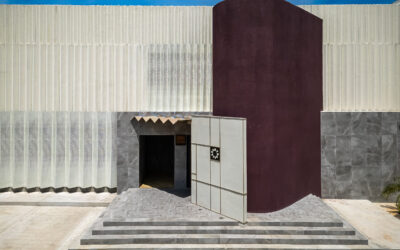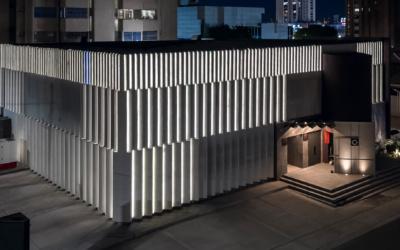Hiring an architect isn’t just about selecting someone to draw up plans. It’s about entering a strategic alliance that will shape the functionality, value, and identity of your project.
Whether you’re developing a family home, a commercial space, or a real estate investment, the architect’s role influences every phase—from early decision-making to final execution.
Yet many clients make this choice without a clear starting point. What should I define before searching? How do I know if they truly understand my needs? What signals show their process is reliable?
Antes de tomar la decisión de contratar a un arquitecto, es fundamental que definas qué esperas de tu proyecto. No se trata solo de tener una idea general del área que quieres transformar, sino de estructurar una visión que funcione como punto de partida claro y coherente.
Muchos errores en obras no tienen su origen en la ejecución, sino en expectativas difusas. Cuando no hay una dirección bien establecida desde el inicio, es muy fácil que el resultado final no responda a lo que imaginabas.

Define Before You Design: Aligning Your Vision Before Hiring
Before selecting an architect, it’s essential to define what you expect from your project. It’s not just about having a general idea—it’s about forming a clear and coherent vision that becomes the foundation for all future decisions.
Many issues in construction stem from vague expectations. Without a defined direction, the final result may stray far from what you had in mind.

Here are some essential questions to ask yourself—and how to approach them:
Residential, commercial, renovation, or new build? Each requires different permits, processes, and technical approaches. Define this to filter architects with relevant experience.


How to Evaluate an Architect’s Portfolio with Real Insight
While aesthetics may catch your eye, the real value lies in detecting signs of experience, technical ability, and conceptual consistency.

Key elements to review:
- Experience in projects similar to yours → Residential, commercial, or renovation—does their work reflect your project’s scale and type?
- Evidence of technical precision → Look for thoughtful construction details, spatial efficiency, and understanding of materials.
- Adaptability vs. rigidity in style → A uniform portfolio may suggest a one-size-fits-all approach. You want an architect with identity who can still interpret your unique vision.
- Consistency between concept and execution → Compare renders with final outcomes. Do built results reflect the original intent?.

An impressive portfolio can be visually persuasive, but what you need to see is solid thinking behind it. Look for signs of clear methodology, adaptability, and a holistic understanding of the built environment.
Ultimately, hiring an architect is not just about choosing a design—it’s selecting the person capable of translating your vision into a tangible, functional, and faithful outcome.
The Process Matters More Than the Style
From the first meeting to final delivery, a trustworthy architect follows a structured process. They communicate transparently, provide realistic estimates, and integrate your feedback through clear stages

A key element is client involvement. Does the architect listen, interpret, and propose solutions based on your lifestyle and needs—or impose a vision without considering your input?

If you’re evaluating candidates, don’t just ask for references—ask about their method. How do they manage costs? How often do they update you? What’s their approach to revisions and approvals? The answers will tell you more than a portfolio ever could.
Warning Signs You Shouldn’t Ignore
Every successful partnership starts with solid foundations. And while every architect has their own way of working, there are universal signs that signal disorganization or lack of transparency.
- ❏ No clear or timely contract
- ❏ Vague or missing service scope
- ❏ Makes major changes without justification
- ❏ Avoids discussing timelines or budget
- ❏ Can’t provide past project references
- ❏ Dismisses your input or priorities
- ❏ Fails to deliver clear documentation or updates
- ❏ Constant turnover in the technical team
- ❏ Unfamiliarity with permits or local regulations

If something feels off early on, ask the hard questions. Choosing wisely isn’t about distrust—it’s about setting up your investment for success.

A Strategic Decision That Shapes Your Project
Great design goes beyond visuals—it’s about understanding real needs, anticipating challenges, and coordinating every phase with precision. Choosing the right professional isn’t about fame; it’s about alignment.
At DG, we combine strategic vision with proven methodology to help you chart the right path from day one. If you’re ready to start your project, let’s talk.We’ll help you define priorities, explore options, and build a solution that reflects your goals—with purpose, clarity, and expert execution.
KEEP READING
CENTRALIA: FROM PRIVATE PROJECT TO URBAN ICON
Centralia transcends its role as a gastronomic hub to become an urban landmark in Maracaibo. This article analyzes how strategic and technical decisions elevated the city’s visual quality and set new benchmarks for architects and developers.
CENTRALIA: MARACAIBO’S NEW ARCHITECTURAL AND CULINARY LANDMARK
Centralia reshapes Maracaibo’s dining scene with an ecosystem designed to inspire. Three restaurants integrated into a high-level contract project that demonstrates how architecture can transform experiences.
LEARN HOW TO INTEGRATE PREMIUM FINISHES WITHOUT COMPROMISING YOUR BUDGET
Choosing premium finishes doesn’t have to mean overspending. In this article, we explore how to prioritize high-impact materials, optimize their use, and make strategic decisions that elevate design without compromising investment.


